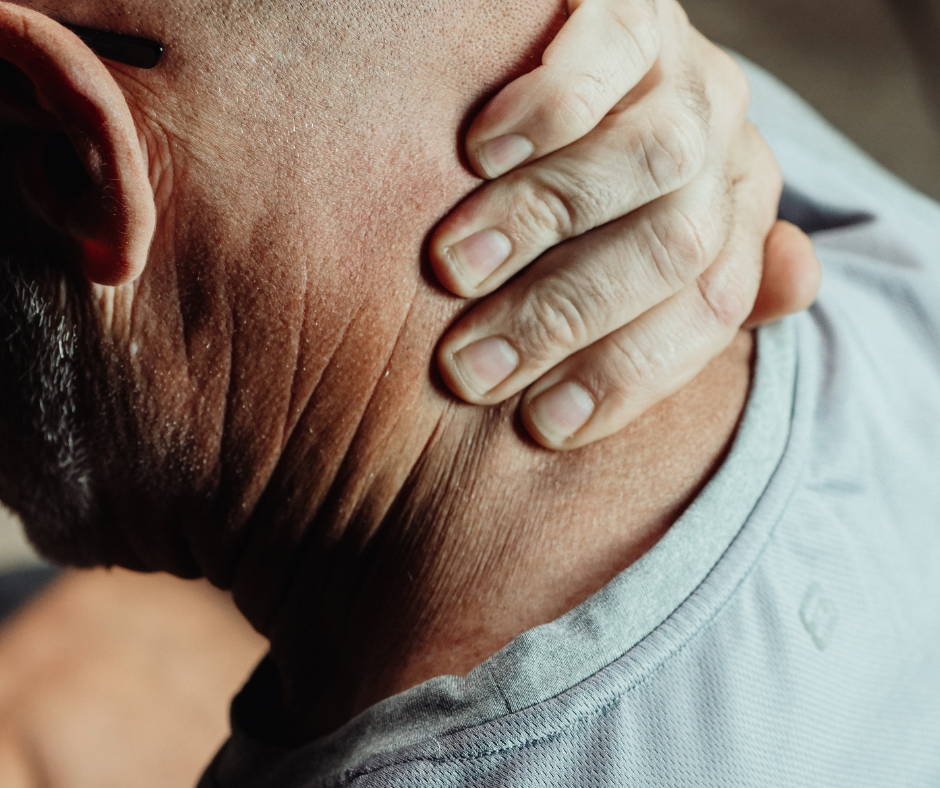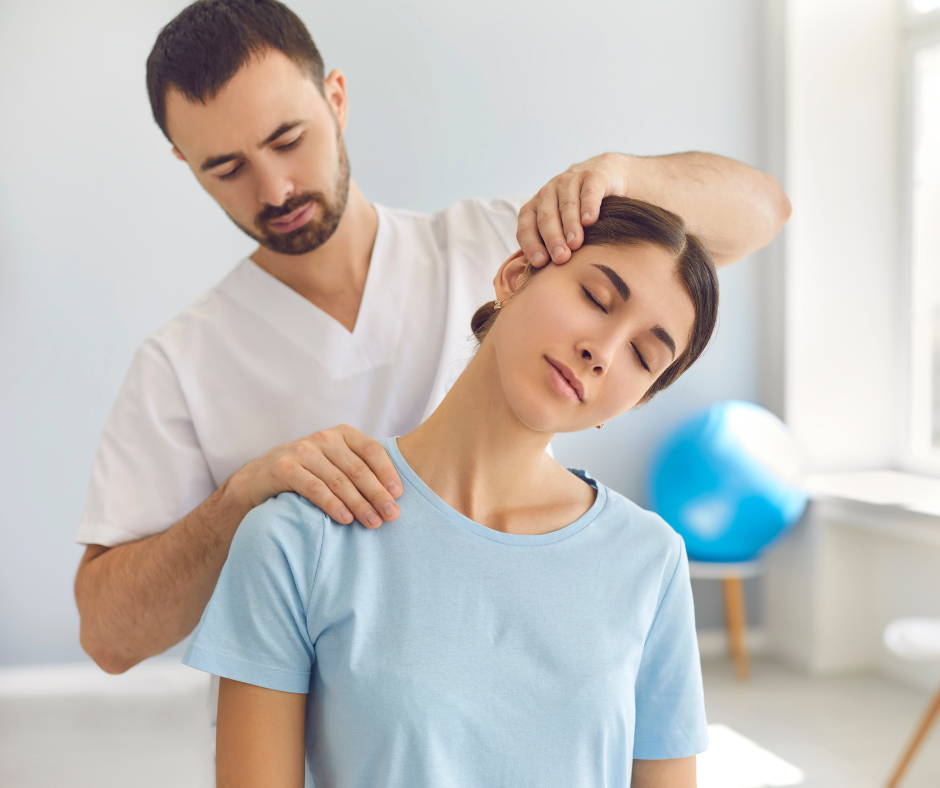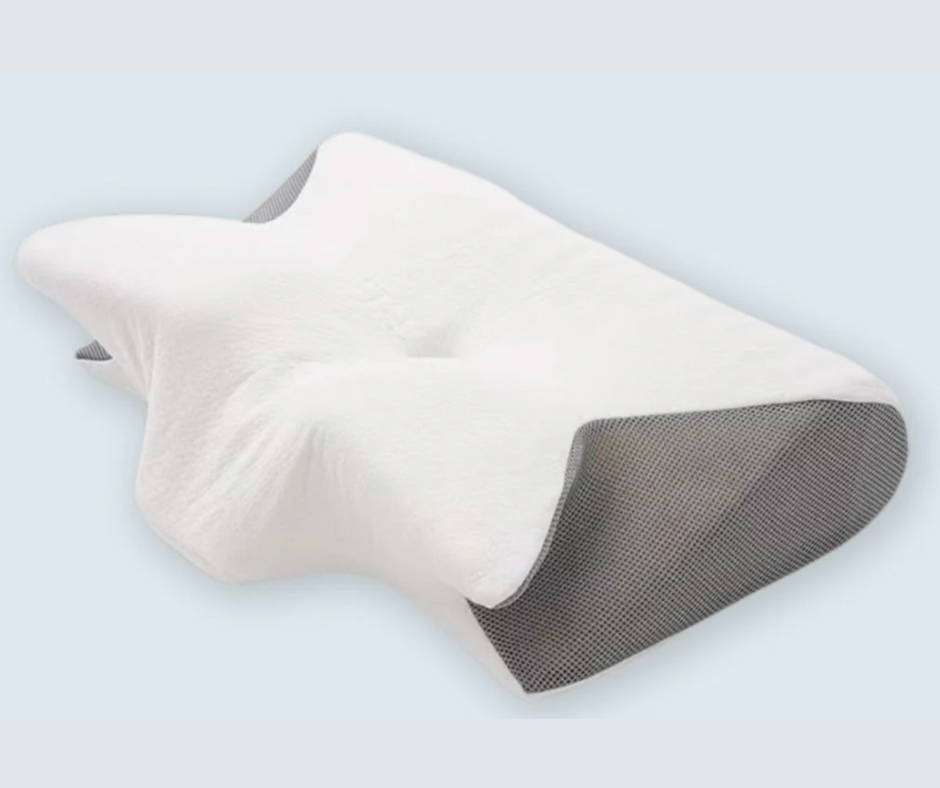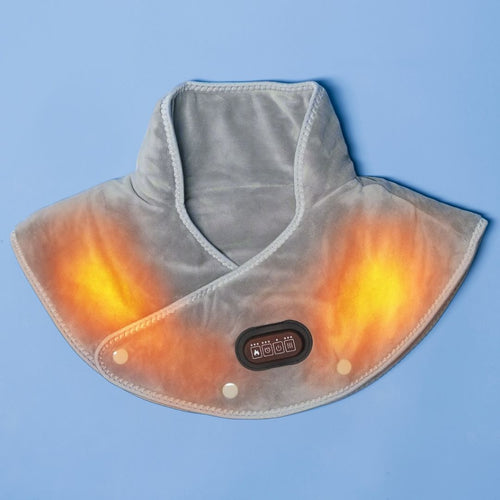Does a Pillow to Get Rid of a Neck Hump ACTUALLY Work?
By Holly Grace Callis | Published on June 6th, 2025

If you've started noticing a small bump at the base of your neck, you're not imagining it, and you're definitely not alone. This common issue, often referred to as a neck hump, dowager's hump, or buffalo hump, can slowly develop due to poor posture, stress on the cervical spine, and the way our bodies adapt to long hours spent looking down at screens or sitting still.
For many people, the first instinct is to search for a simple fix, and that often leads to questions about posture tools, traction devices, or specially designed supportive pillows. But can a pillow really help you get rid of a neck hump?
In this blog, we'll walk through what causes neck humps, how they affect your body, and whether using a targeted pillow (like a cervical neck traction device or contour support pillow) can actually make a difference. If you're ready to learn more about non-invasive ways to support your spine and improve posture, you're in the right place.
Let's start by understanding what a neck hump really is and why it happens in the first place.
What Is a Neck Hump and Why It Happens
Have you ever noticed a small bump forming at the base of your neck? For many people, it starts subtly. Just a little curve that seems more noticeable in certain tops or when looking at your reflection. Over time, it might grow more defined, leading to discomfort, stiffness, or even concern about appearance.
This bump is often referred to as a neck hump, dowager's hump, or buffalo hump. Medically, it's associated with changes in the upper spine, often related to posture issues. One of the most common causes is forward head posture, where the head is pulled forward in front of the shoulders, placing extra strain on the base of the neck and upper back.
This kind of poor posture is more common than ever. Long hours of sitting, screen time, and phone use often cause the head to drift forward, pulling the spine out of alignment and creating extra tension across the shoulders and upper back. Over time, this leads to physical changes in the neck's natural curve.
The result is more than just a bump; it's a signal that your posture and spinal health may need support. The good news is that the earlier you notice it, the easier it can be to address. Many people are now turning to supportive solutions like targeted pillows and traction devices to gently correct alignment, ease discomfort, and reduce visible changes in the upper spine. Let's explore what causes neck humps and how they can be managed.
Causes of Neck Hump: Why It Develops and Who's at Risk

A neck hump doesn't develop overnight. It's often the result of years of poor posture, subtle changes in the spine, and small imbalances in how the body holds itself day after day. Understanding these causes is the first step toward meaningful relief.
One of the biggest contributors is forward head posture. This occurs when the head leans too far forward of the body's midline and is often caused by poor sitting posture, excessive device use, or hunching over desks. Over time, this posture places strain on the upper back muscles and the cervical spine, leading to gradual changes in the neck's alignment.
Other contributing factors include muscle imbalances, particularly when the back muscles are too weak to counterbalance tight chest or shoulder muscles. These imbalances create a constant pull that shifts posture out of alignment.
Certain groups are more at risk. Older adults may develop a neck hump due to bone density loss or natural changes in the spine. Conditions like osteoporosis can lead to vertebral compression fractures, which may cause a visible hump to form. A family history of spine issues can also increase the likelihood of developing a dowager's hump.
In some cases, the condition progresses into kyphosis, a more pronounced curvature of the upper spine. This condition can affect both mobility and appearance. (For more, the American Academy of Orthopaedic Surgeons (AAOS) provides helpful guidance onkyphosis here.)
In short, a neck hump is often caused by a mix of bad posture, excessive curvature, and lifestyle factors. But once you understand what's behind it, you can start making changes. And many of those changes begin with supporting the spine (especially during rest and recovery).
How Neck Hump Affects the Body
A neck hump isn't just a cosmetic issue. It can have a real impact on how your body feels and functions. The cervical spine is responsible for supporting your head, allowing for smooth movement and proper alignment. When that curve becomes distorted, your entire spine health is affected.
One of the most common symptoms is neck pain. You might feel tension at the base of the neck, along the shoulders, or into the upper back. These areas can become tight or sore from constant strain. Over time, people often develop tension headaches, shoulder pain, or even reduced mobility in the upper body.
The muscles that are meant to support your head and neck become overstressed, especially if you're dealing with a forward head position. Back muscles work harder to compensate, and the body's natural alignment gets thrown off.
Even everyday activities (like turning your head, standing tall, or sleeping comfortably) can become more difficult. And while the physical symptoms are frustrating, the emotional impact is just as real. Many people with a visible neck hump report feeling self-conscious or concerned about long-term discomfort.
That's why early support matters. The sooner you give your neck and upper back the care they need, the easier it becomes to restore comfort and confidence.
Common Approaches to Treatment

If you're starting to notice signs of a neck hump, it's important to know that you have several effective treatment options, and the sooner you begin, the better the results tend to be. Early intervention can help prevent further curvature and relieve the growing tension in your neck and upper back.
Physical Therapy
The most common approach is physical therapy. A trained physical therapist can guide you through a program of stretching exercises and strengthening exercises designed to improve posture, restore mobility, and reduce pain. These movements often focus on opening up the chest, activating the upper back muscles, and supporting the spine's natural alignment.
Lifestyle Changes
Alongside therapy, small lifestyle changes can make a big impact. This might include improving your sitting posture, taking more breaks from screens, and becoming more aware of daily habits that contribute to slouching or poor posture.
Supportive Pillows
Another practical layer of support? Tools that help you maintain better alignment between sessions, like supportive pillows, neck stretchers, or at-home posture aids. These products are increasingly being used to reinforce the goals of physical therapy and give the body gentle reminders throughout the day.
For many people, a pillow becomes their first step into self-care. It's accessible, easy to use, and offers real relief, especially when designed to support the cervical spine. And while no single pillow is a cure-all, it can be a powerful part of your routine to help manage posture and provide lasting pain relief.
Can a Pillow Help Get Rid of a Neck Hump?
It's a question many people ask when they first start researching at-home posture tools: Can a pillow really help get rid of a neck hump?
The short answer? A pillow to get rid of neck hump isn't a complete solution by itself. But it can be a meaningful part of your recovery. Certain pillows are designed to do much more than offer a soft place to rest. They're shaped and structured to help support the cervical spine, gently guide the head into a more aligned position, and reduce strain on the base of the neck.
A high-quality neck hump corrector pillow works in a few key ways:
-It helps realign the cervical spine, which can reduce visible curvature over time.
-It provides stable neck support during rest or traction, encouraging improved posture throughout the day.
-It reduces tension in the upper back muscles, where stiffness and imbalance often contribute to the problem.
Unlike standard pillows, which can sometimes reinforce poor sleeping habits, targeted designs like cervical neck traction devices are made to interact with the spine and muscles in a more intentional way.
That's where Callixe's Thera and Mirella pillows come in. These aren't just cushions; they're tools designed to encourage natural alignment and address the discomfort that comes from prolonged postural stress.
Of course, it's important to manage expectations. A pillow alone won't get rid of a neck hump if the underlying issues (like poor posture, muscle imbalances, or lack of movement) aren't addressed. But used consistently and as part of a broader plan that includes exercise and awareness, the right pillow can play a meaningful role in your progress.
How the Thera Pillow Supports Neck Hump Relief

The Thera Pillow from Callixe is a fully integrated cervical neck traction device designed to provide three key therapies in one easy-to-use product. For individuals experiencing neck pain, forward head posture, or early signs of a neck hump, it provides a targeted and gentle approach to addressing the problem at its source.
What sets the Thera Pillow apart is its use of TheraBlend™ Technology, combining:
-Traction therapy to lightly stretch and decompress the cervical spine, relieving pressure and encouraging better alignment.
-Heat therapy to increase blood flow, loosen tight tissues, and support relaxation in the surrounding neck and upper back muscles.
-Vibration massage to target deep tension and improve muscle flexibility, especially helpful for reversing stiffness caused by poor posture.
By using these three treatments together, the Thera Pillow acts as a neck stretcher and neck hump corrector that works in short, manageable sessions—just 15 minutes a day. As the cervical area is gently stretched, the spine is encouraged to return to its natural shape, relieving tension at the base of the neck and encouraging improved posture over time.
It's especially useful for people managing vertebral compression fractures, tension buildup, or posture-related stiffness. Because the Thera Pillow is non-invasive, it's often a great starting point for people exploring self-guided care or for those not ready for physical therapy or more advanced medical treatments.
It's also easy to use. There's no learning curve, and the automatic shutoff provides peace of mind. Many users report that it becomes part of their daily routine, like stretching or light movement. And with Callixe's 90-night risk-free trial, there's little reason not to give it a try if you're looking for pain relief and real postural support.
The Thera Pillow is a supportive tool that helps guide the body back into better alignment. It doesn't replace strengthening exercises or lifestyle changes, but it can help you move and feel better. Especially when used consistently and alongside good posture habits.
Mirella Contour Pillow for Nightly Support

While traction is an important part of restoring posture, the way you sleep each night also plays a significant role in how your spine feels day-to-day. That's where the Mirella Contour Pillow comes in.
The Mirella is a supportive pillow designed specifically to support the cervical spine, working quietly in the background to help reinforce healthy posture and alignment while you rest. Its contoured shape cradles the neck and encourages a natural curve, no matter your sleeping position.
This is especially important for people who tend to slouch or feel pulled forward during the day. A poor pillow can worsen those effects, leaving you stiff or sore by morning. But a well-shaped pillow like the Mirella provides neck support that helps the spine recover overnight.
Because the pillow holds the neck in a neutral position, it also reduces pressure on the upper back and shoulders. That makes it easier to maintain good posture throughout the next day. Over time, this consistent support can lead to noticeable improvements in spine health and comfort.
For those working to correct poor posture or reduce discomfort from a developing neck hump, the Mirella Pillow offers an easy win. It doesn't require extra time or effort. You can just swap out your regular pillow and let it support you while you sleep.
Used alongside the Thera Pillow during the day, the Mirella helps create a full-circle system of posture care: traction by day, recovery by night. When paired together, these tools offer a practical and sustainable approach to reducing discomfort and building better habits for long-term posture support.
Exercises to Support Long-Term Results

Using the right pillow is a great start, but building strength and mobility through movement is just as important. A few simple neck hump exercises can help correct imbalances, strengthen muscles and weak areas, and promote better posture throughout the day to provide neck pain relief.
Chin Tuck
Using the right pillow is a great start, but building strength and mobility through movement is just as important. A few simple neck hump exercises can help correct imbalances, strengthen muscles and weak areas, and promote better posture throughout the day to provide neck pain relief.
Wall Angels
Next, try wall angels. Stand with your back flat against a wall, arms bent to 90 degrees and slowly raise and lower your arms like you're making a snow angel. This movement activates the upper back and shoulder stabilizers, helping pull the body into a standing tall posture.
Shoulder Rolls and Stretches
You can also include basic shoulder rolls and stretches that open up the chest and relieve tension in the neck and back.
These stretching exercises and strengthening exercises don't need to take much time. A few minutes each day—morning, evening, or during a break—can make a real difference. Start with what feels manageable and build from there.
If you're experiencing significant discomfort or noticeable changes in your spine, it's advisable to consult a physical therapist. They can assess your posture and create a program tailored to your specific needs.
By combining consistent movement with tools like the Thera and Mirella pillows, you'll support your back muscles, realign your posture, and set yourself up for lasting change.
Lifestyle Tips to Prevent Recurrence
Once you start seeing progress, the next step is keeping it going. A few simple lifestyle changes can help prevent a neck hump from coming back and support long-term comfort.
Start by checking your sitting posture. Make sure your screen is at eye level, your shoulder blades are relaxed, and your arms are supported. Small adjustments to your desk or chair setup can relieve strain on your upper back and neck.
Take regular breaks. Every 30–60 minutes, stand up, stretch, or walk around. This keeps your posture from locking into one position and gives your muscles a chance to reset.
Avoid tech neck habits, like looking down at your phone for extended periods. Bring your device up to eye level and stay mindful of your head position.
Tools like pillows and posture correctors offer support, but they work best when paired with daily awareness and healthy habits. If needed, add physical therapy to your plan for more structured support.
Final Thoughts: Should You Try a Pillow for Neck Hump Relief?
If you're dealing with a developing hump or neck pain, a pillow to get rid of neck hump won't fix everything, but it can be a useful tool in your self-care routine.
When used consistently, products like the Thera and Mirella pillows from Callixe offer genuine pain relief, improved alignment, and enhanced posture, particularly when combined with movement and mindfulness.
Your body responds best to support that's both consistent and gentle. So, if you're ready to feel better and look after your spine, consider trying one of these tools risk-free. Small changes today can lead to healthier posture and more comfort tomorrow.









